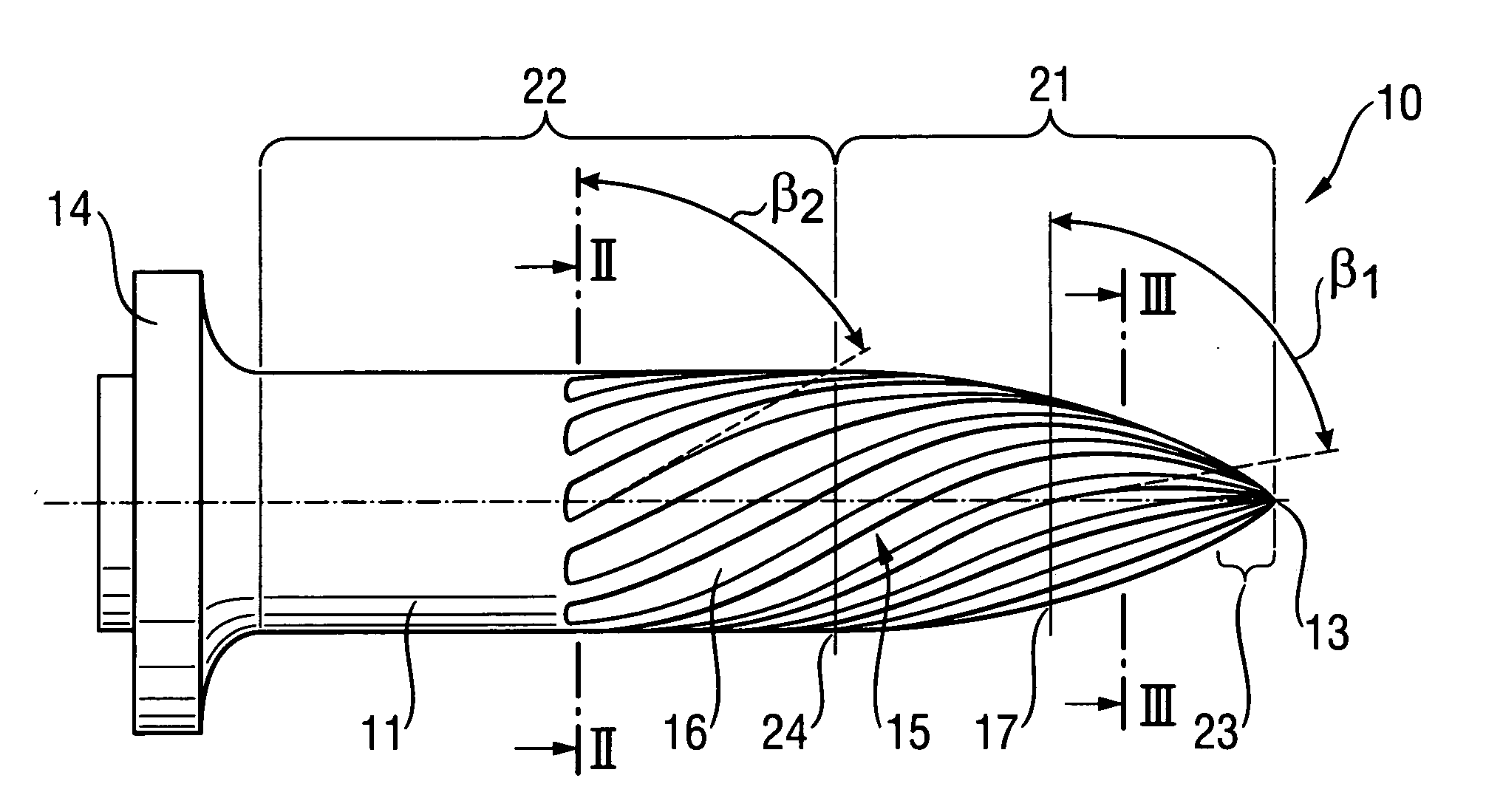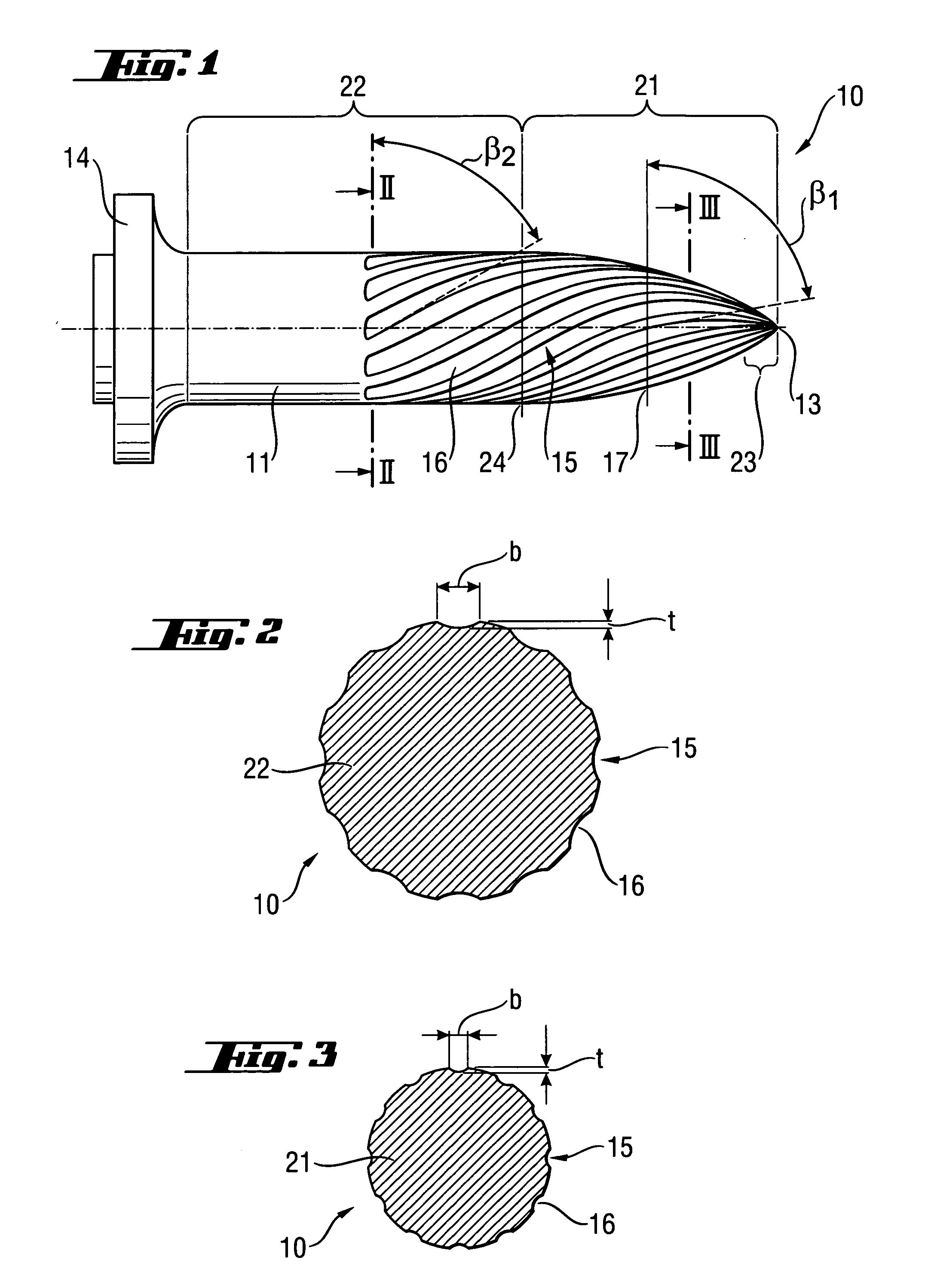Fastening element
a technology of fastening elements and fastening rods, applied in the direction of fastening means, nails, surgery, etc., can solve the problems of increasing friction, and affecting so as to improve the effect of fastening rod rotation, reduce the drive-in energy, and good rotation
- Summary
- Abstract
- Description
- Claims
- Application Information
AI Technical Summary
Benefits of technology
Problems solved by technology
Method used
Image
Examples
Embodiment Construction
[0021] A fastening element 10 according to the present invention, which is shown in FIGS. 1-3, is formed as a nail having a head 14, a stem 11 adjoining the head 14, and a tip 13 provided at the end of the stem 11 opposite the head 14. The stem has two sections, a first spherical section 21 that directly adjoins the tip 13, and a second, substantially cylindrical section 22 that extends from the end 24 of the first section 21, opposite the tip 13, to the head 14. The region of the second section 22, which is adjacent to the first section 21, is provided with a thread profile 15 that also extends over the first section 21. In the embodiment shown in the drawings, the thread profile 15 has twelve profile groove 16. In the region of the second section 22, the thread profile 15 has a constant steep gradient with a lead angle β2 of 60°. The angle is defined from an equation tan β=Ph / πd, where Ph is the thread profile gradient and d is the diameter of the fastening element 10. In the regi...
PUM
 Login to View More
Login to View More Abstract
Description
Claims
Application Information
 Login to View More
Login to View More - R&D
- Intellectual Property
- Life Sciences
- Materials
- Tech Scout
- Unparalleled Data Quality
- Higher Quality Content
- 60% Fewer Hallucinations
Browse by: Latest US Patents, China's latest patents, Technical Efficacy Thesaurus, Application Domain, Technology Topic, Popular Technical Reports.
© 2025 PatSnap. All rights reserved.Legal|Privacy policy|Modern Slavery Act Transparency Statement|Sitemap|About US| Contact US: help@patsnap.com


